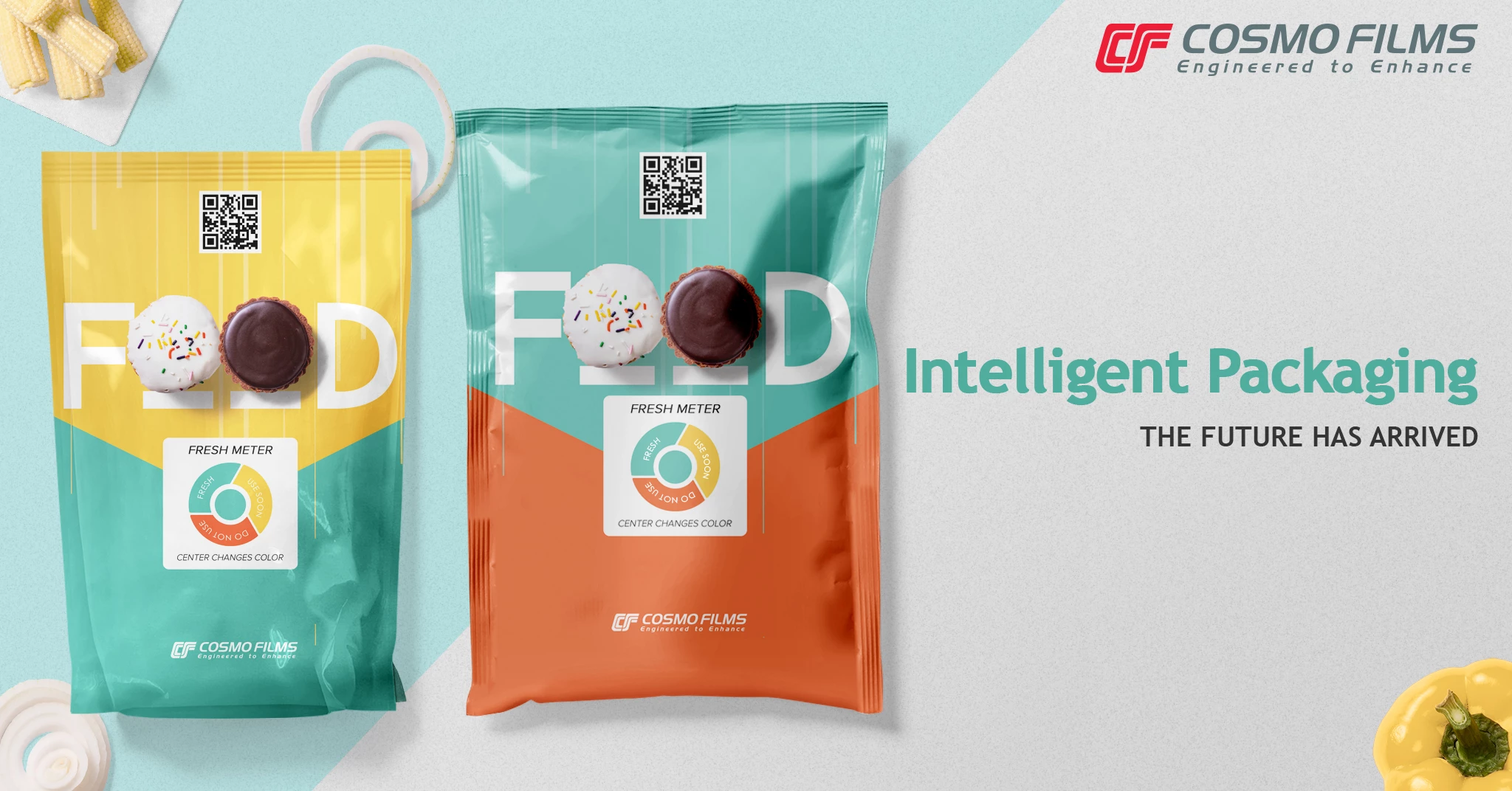Love to hear from you!
Get in touch.

With all aspects of our lives becoming smarter and more intelligent, packaging is not too far behind. Consumer expectations are becoming increasingly high, and industries across the spectrum are upgrading their products and systems to become smarter, and provide exceptional customer experience. The packaging industry is no exception, and has already started using intelligent packaging to meet consumer demands. Although intelligent packaging is still largely in its development stage, its market cost is already valued at $1.06 billion. Gone are the days when the sole purpose of packaging was protection of goods and branding. Today, with changing lifestyles and the risks of packaged food, consumers want much more from packaging and intelligent packaging is the answer. But before we go any further, let’s find out what exactly is intelligent packaging.
What is intelligent packaging?
Various disciplines such as chemistry, biochemistry, food technology, physics and electronics come together to offer breakthrough solutions in form of intelligent packaging. The primary objective of intelligent packaging is to “sense” and “provide information” and indicate whether or not the quality of the product is deteriorated. Intelligent packaging provides information that consumers need to know with respect to the product storage, usage and expiry. Intelligent packaging uses its unique features such as sensing, detecting, tracing, recording and communicating to facilitate extension of shelf life, enhance quality and safety, provide information, and warn about potential problems. Intelligent packaging use indicators and microsensors to perform its functions. Some of the smart features of intelligent packaging are:
1. Time-temperature history – Temperature of the external environment is one of the biggest challenges faced during storage, transportation and distribution of food products. Intelligent packaging aims to provide indicators that manage changes in temperature, and alert consumers about the possible risks associated with consumption of the product. Some can also indicate the temperature changes that occur with time along the distribution chain. The indicators create an irreversible physical change in the package in response to the temperature history.
2. Microbial growth indicators – These indicators monitor the microorganism growth in packaged food by sensing indication of gas or other volatile substances that might be produced in the package. These indicators also monitor the the pH value of the food product, all of which indicate the state of the food. These indicators then visually respond to these factors and alert the end consumer and/or retailer about possible food quality, safety condition and educate the consumer about appropriate action.
3. Light protection – Light is a common cause of damage during transportation. Light and ultraviolet radiation triggers chemical reactions in the food product, and hence protection from light is an important function for any packaging. Intelligent packaging tackles this problem with the application of unique ink or pigments that change colour on exposure to UV light and alert the end consumer of further course of action.
4. Physical shock indicators – Shock indicators highlight if the product has been exposed to potentially damaging impact during transportation. Like the other indicators, these also visually alert the end users and other stakeholders about potential damage. Even in the event of mishandling, these sensors provide information regarding the event, and this information can be used to create accountability and set up measures to deter mishandling and reduce costs incurred through damage.
5. Leakage indicators – These indicators provide information on whether there has been leakage in the package along the entire distribution chain. These indicators not only highlight substance leakage but also gas leakage. For instance, if the CO2 concentration decreases and O2 increases, it can lead to microbial growth and subsequent spoilage.
Intelligent packaging must not be confused with active packaging. Active packaging use films that ensure the food product remains in its best condition throughout the delivery chain. Intelligent packaging, on the other hand, alerts the consumers or retailers about the product’s freshness or perishability. But intelligent packaging has more sophisticated functions than you can imagine. The technology of intelligent packaging can be applied to identify counterfeit products, boost consumer engagement with the help of smartphones, avoid food wastage through clear indication of freshness levels or expiry of the product. Intelligent packaging will also play a significant role in pharmaceutical industry where patient’s compliance with the time and quantity of dosage intake can be objectively monitored and even shared with manufacturers.
The advantages of intelligent packaging are undeniable and they are pushing brand owners to migrate to intelligent packaging, and not only improve consumer experience but boost consumer interaction, set new standards in quality, and address the challenges faced with traditional methods of packaging. This is not to say that intelligent packaging does not have challenges. In fact it does; the use, affordability and easy availability of smart or intelligent materials, and consumer education are the biggest challenges of intelligent packaging. Nevertheless, it is an exciting future for the packaging industry, and all eyes are set on the development of intelligent packaging.
Featured Post
Love to hear from you!
Get in touch.